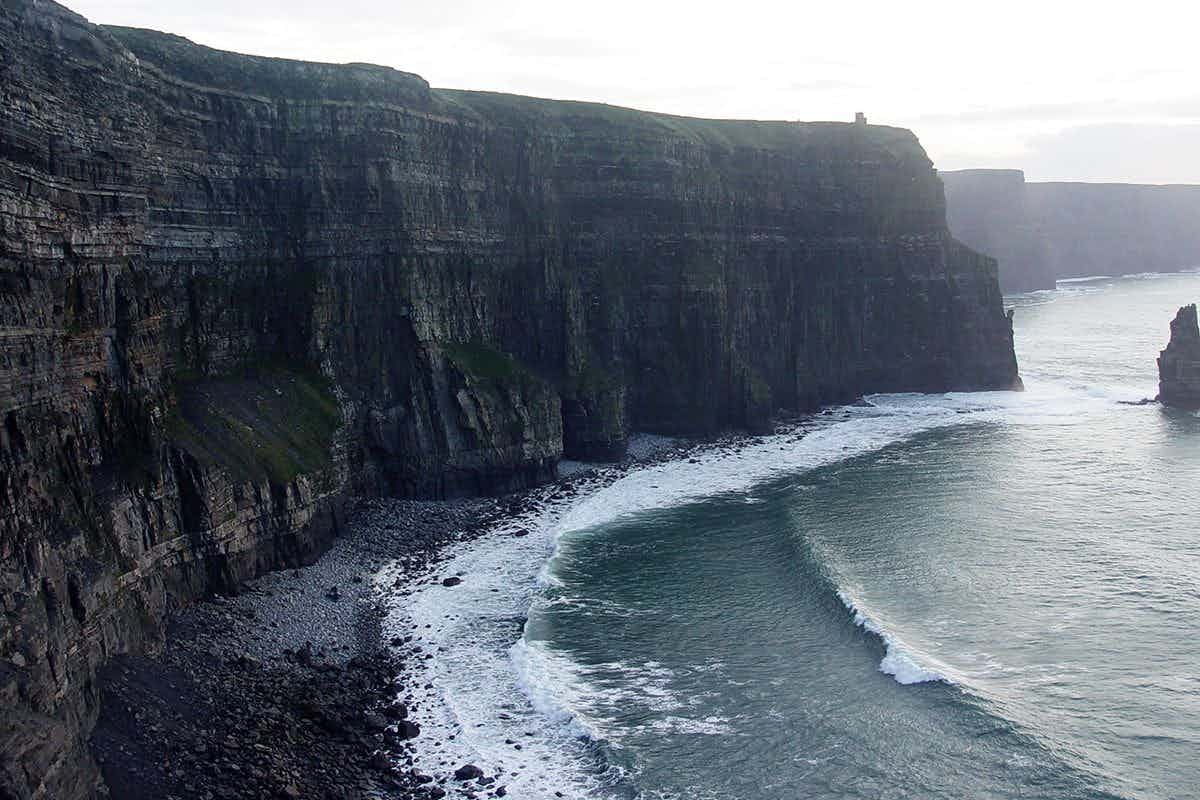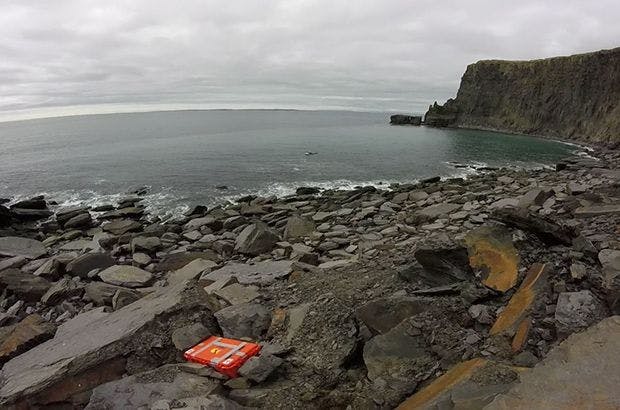LifeguardingIn Case of Emergency

Most surfers with a few years of committed wave riding under their belts will have, at some point or another, found themselves in a dangerous or scary situation – although whether or not they relay their true fears when they tell the resulting story to their mates at the bar that night is another matter. When things go wrong at sea they can go wrong very quickly, and whilst plenty of people ride waves under the watchful gaze of the guys and girls in red at popular beaches during the summer months, many more seek surf out of season and out of bounds; because that, ladies and gentlemen, is surfing. We don’t surf because it’s predictable and sanitised, and the events of recent weeks – from Mick Fanning punching a Great White Shark through to Niccolo Porcella’s wince-worthy trip over the falls at Teahupoo – are extreme and headline grabbing examples of that.
On the West Coast of Ireland, under the towering Cliffs of Moher, the large and heavy waves ridden at spots like Aileens, Rileys and Laurens draw a crew of committed and talented local chargers on a regular basis, with international big wave surfers often flying in to meet significant swells. Access here is difficult and the consequences of an injury sustained during a wipeout or a broken board or leash can be serious, both for the victim and for their rescuers. An orange rescue ring on the end of a coil of frayed rope won’t cut it here. Instead, the local surf community has banded together to put in place plans and procedures to ensure that if something does go wrong then the best outcome possible is achieved with minimal risk for all involved. Peter Conroy, a local charger and firefighter/paramedic (who also holds a degree in Disaster Management), has been at the forefront of an initiative to train Irish surfers in PWC rescue techniques and to put in place emergency procedures for significant swell events. Peter broke his back whilst surfing the heaving left hand slab at Rileys back in 2009, so knows all too well the inherent dangers involved with surfing these waves. With the help of other experts and water safety professionals, Peter and the members of the Irish Tow Surf Rescue Club have organised training sessions, set in place safety protocols and placed defibrillators and safety equipment at a number of surf beaches.
“Since the formation of the club in 2007/8 we have trained over 80 people in jet ski rescue techniques, helped out on many charity and surfing events, and assisted all the pro surfers that wish to surf our biggest and slabiest waves here as well as promoting safety and smart thinking when it comes to surfing waves of consequence.”
Most recently they have placed a fully stocked safety and rescue box on the rocky and inaccessible beach on the inside of Aileens. This beach is on the opposite side of the headland from where surfers paddle out (following a perilous climb down the cliffs) but if a surfer is washed inside and cannot get back out then it is on this stretch of boulders (backed by sheer and un-scalable cliffs) that they will be stranded. The surfer in question might just need to rest up before punching through the shorebreak and paddling or swimming back out and around, or they could need the attention of their fellow surfers to deal with an injury before evacuating them on the back of a ski; either way this big orange box will help and, it is hoped, should prevent the need to unnecessarily call on the services of the coastguard to effect a rescue.

“The box is located right in front of where the wave Aileen’s breaks; it is just above the high tide mark and is visible from the water and from the top of the cliff. I choose this spot as it is not accessible to the public so the equipment is safe, it can only be accessed from the water where an injured surfer will be washed in.”
Packed inside is a first aid kit and a variety of survival essentials including swim fins, warm clothing and survival bags, bottled water, energy bars, signal flares, a vhf radio and a flash light. It is hoped that with this in place, a repeat of the daring helicopter rescue of a surfer from this beach in March of this year (an incredible feat of flying and professionalism undertaken by the Irish coastguard and rescue services) can be avoided if at all possible.
Few surf spots punish the minutest mistakes or errors in judgment quite as harshly as big wave spots, and in particular those that sit beneath the Cliffs of Moher. Hopefully the big orange peli-case now wedged amongst the boulders above the high tide line at the bottom of those cliffs will never have to be opened by a surfer in need, but better safe than sorry.
The Irish Tow Surf Rescue Club would like to thank Peli Products Ireland, Patagonia and North Core for donating the box and its contents, and above all the Irish Coastguard and rescue services for always being there for the surfers who choose to test themselves in waves of consequence. They are currently working on placing a defibrillator and a similar rescue box at Mullaghmore, and would be grateful for any donations of kit or financial assistance to help them bring this about. You get in touch with them through their facebook page.